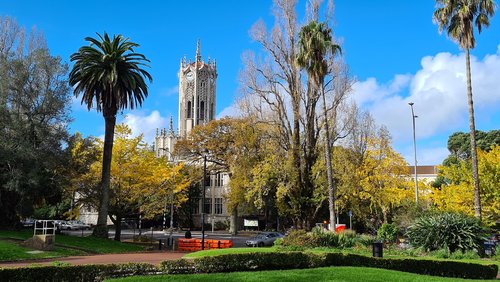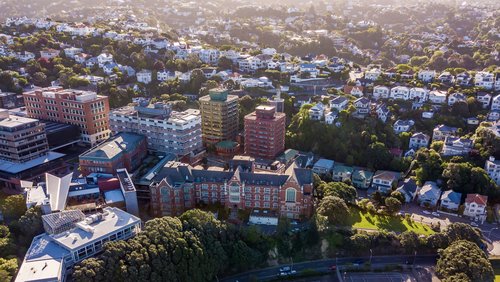21 Jun 2021
What more could engineers be doing to achieve a dramatic downshift and help key sectors adapt to help the country become carbon neutral by 2050?
Unflinching” is the word that comes to mind when you hear Susan Krumdieck MNZM MEngNZ’s analysis of what New Zealand must do to become carbon neutral. The world won’t be saved by more solar panels, says the Professor of Mechanical Engineering at the University of Canterbury, who has been consumed with how engineers should respond to the existential threat of climate change since she was a youthful researcher.
We have so badly overshot the mark, she argues, that business as usual with a green tinge just won’t cut it. Instead, this country along with everyone else is going to have to dramatically downshift our energy use. How dramatically? Try 80 percent in the next 10 years. She recites the canon of sustainability solutions – renewable energy, sustainable development, green chemistry, recycling.
“We’ve been doing all those things for a long time, and yet here we are. So, it’s time for rethinking. Basically, the level of energy use we need to get to is about the same as it was in the 1950s.”
“We engineers need to step up”
It’s an analysis that springs not from fatalism but from years of research. Susan has crunched the numbers on formulae such as Energy Returned on Investment (EROI) and concluded that, with the exception of hydro and possibly geothermal energy, climate-friendly alternatives to fossil fuels don’t add up – and New Zealand is no exception.
Earlier this year, the Climate Change Commission released draft advice for consultation, with recommendations on how to cut emissions to ensure New Zealand is carbon neutral by 2050. Susan believes the Commission hasn’t grasped the nettle.
“But then I wouldn’t expect them to. And this is where we engineers need to step up: we need to show what this downshifted energy future looks like, and how it can be a better place. It’s actually our job to transition these systems,” she says, stressing it will be young and future generations of engineers who do the heavy lifting making these decarbonisation changes.
“They now get to redo everything.”
In Susan’s 2019 book, Transition Engineering: Building a Sustainable Future, she provides the insight that safety engineering is a useful model for understanding how engineers can tackle unsustainable development. Just as safety engineering arose in response to the failure of manufacturing systems to address workplace hazards, this century’s engineers can take responsibility for leading the transition to zero carbon, innovating, and developing new methodologies.
Her book addresses the latter point with a seven-step transition engineering method (she calls it InTIME) to help engineers put energy downshift projects into action. It’s a framework for innovation and a process that recasts a potentially overwhelming problem into a manageable process.
Susan also stresses the need to embed these principles and practices in engineering education. This year, she’s running a new online professional development course in transition engineering.
“We reckon that we could get all New Zealand engineers through that in a couple of years,” she says.
“If all engineers were speaking the same language and were able to layout to clients ‘Here’s the process we’re going to follow then we could start leaving behind last century’s thinking and figure out how to make the changes that are needed.”
Transport transition
What will those changes look like in key sectors such as transport and the built environment? Engineering New Zealand Transportation Group Chair Bridget Burdett CMEngNZ collated the group’s submission on the Climate Change Commission report. The starting point, she says, is rejecting the assumption we can keep growing car traffic in New Zealand. Yet that car-centric paradigm wasn’t addressed with any vigour in the Climate Change Commission blueprint, which Bridget describes as “underwhelming”.
Take its proposal for a 95 percent increase in walking for active travel, which sounds like a big number.
“But we’re coming from such a low base that in essence it means going from one percent of trips to two percent,” Bridget says.
“We need a lot more ambition than that. And we know we can do it. Around half of all people crossing the Auckland Harbour Bridge in peak time are in the single bus lane. Without buses, the bridge would need to be 16 lanes wide to carry the same number of people.”
As for electric vehicles, Bridget says there’s quite a bit of disagreement in the transport sector about “how passionately we should advocate for them”.
“In our submission, we say that electric vehicles are better [than petrol or diesel], but the fact they’re promoted gives people an out clause to avoid the harder planning that we need.”
Much of that planning is about fundamentally changing the way we live in our towns. The Transportation Group’s submission favourably cited the “20-minute city” concept, which holds that the bulk of what you need should be within a 20-minute walk or cycle of your home.
“These liveable communities are the transition option for transport. We want people to live, work and play as locally as possible. And if people need to go further, then because so many cars are now off the streets you can have more efficient public transport.”
Related schemes known as low-traffic neighbourhoods are already being piloted in Auckland suburbs Onehunga and Glenn Innes, using bollards, planter boxes and other traffic-calming measures to prevent motorists using the streets as rat-runs.
“They essentially become longer cul-de-sacs within a one-kilometre-square block. The idea is that trips are now more direct if you’re walking or biking, and easier, safer and more fun.”
One recent development that could be a useful catalyst for the 20-minute city concept is the advent of e-bikes. Bridget is a huge fan.
“They’re a market-driven response to so many different challenges and they could be transformational.”
On the flipside, political leadership at a local and national level is still often at odds with the best engineering solutions, and there’s not enough urgency about reducing car trips.
“A lot of us working in this area feel we live in an echo chamber. We keep seeing new streets being built that are old-fashioned and not fit for purpose for any kind of transition. We’re constantly undermined in the delivery system because transport always interacts with politics and land-use planning decisions,” says Bridget, citing her own rapidly growing hometown, Hamilton.
“Even on new greenfields subdivisions, elected representatives and some staff will say ‘Oh, but some people will still want a two-car garage’.”
She says smaller houses are needed to provide the density that supports public transport and walkability, so people don’t need to own a car.
“Our biggest challenge as engineers is to stand up to these car-centric attitudes that are not evidence-based and say ‘actually, this is a really complex problem, we’re trained to deal with complexity, let’s work on this together.”
Decarbonising buildings
What about the built environment? What can engineers and others do to transition that sector to net-zero carbon emissions? Engineering New Zealand’s Sustainability Society Co-Chair Monique Cornish says the trick is to build less – in other words, to repurpose and use existing assets in a smarter way “so we don’t actually need to build”.
But that’s only ever going to be part of the answer. The good news regarding new builds, she says, is we already know what to do when it comes to decarbonising. The hurdle is not lack of knowledge, it’s resistance based on a perceived economic downside and a business-as-usual mindset.
She gives the example of pouring concrete. On large building projects, a slower-to-cure, low-carbon concrete could be used for the majority of a foundation, then finish with a higher ratio of fast-curing Portland cement. While on a construction site time is money, a building programme can be staged to make a lower-carbon approach work.
As for creating energy-efficient buildings: “We absolutely know how to do that. Things like the tightness of the building envelope, taking advantage of passive design opportunities, they’re almost formulaic now. Truthfully, the barrier to building better is a sense of the extra up-front cost.”
It’s up to engineers, she says, to help clients understand that while they may pay more initially, the expense is recouped in reduced lifetime operating costs if it’s a well designed and constructed, sustainable building.
Another important role for engineers is to reduce embodied carbon – emissions from the materials and products that form the building and can occur right across the building’s life cycle.
“Whether it’s simple tweaks to construction methodology like the concrete pour example, or handling projects and assets in a way that prioritises dematerialisation and looks for low carbon solutions, that is the work of the engineer,” she says.
“No one else can do that for clients.”




